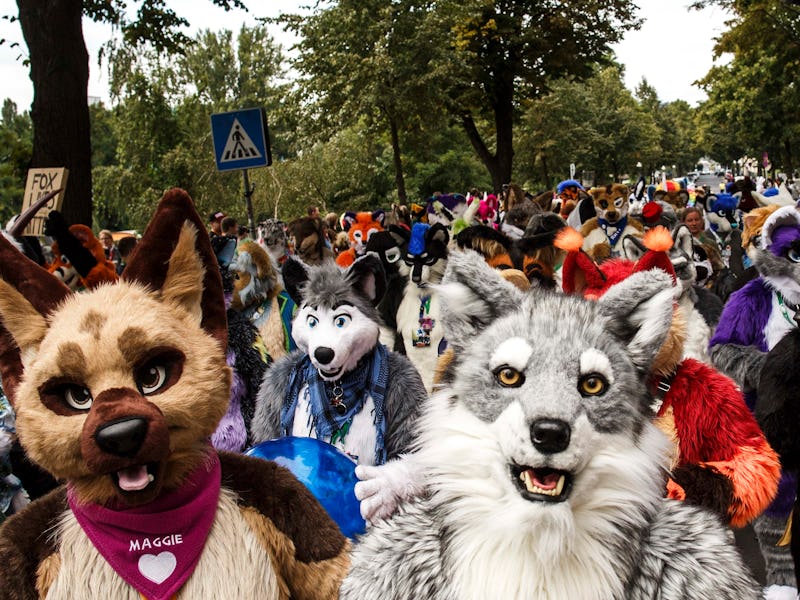The Furry Fandom Hasn't Stopped Growing Since 1990
Is being able to communicate with other furries online allowing the subculture to thrive and explore?

New data posted to Reddit proves that furries are not only among us; they are adding new people to their ranks, and they’re not stopping.
When furries began meeting in Pittsburgh in 1990, the average person may not have understood why hundreds of people were dressed as mascot animals, listening to lectures, watching talent shows, and attending parties together. In 2017, most people who live online know roughly what furries are, though the “fandom” (as furries call themselves) is still woefully misunderstood.
Essentially, a furry is someone who finds joy in the images, animation, fantasy of, or playing as anthropomorphized animals. The furry fandom (again, that’s the term they like, though they’re not really “fans” of anything cohesive) comprises people of all demographics, and a small subset of furries enjoys what the group calls “yiffy” play, or humanized-animal flirty play, like cuddling, “scritching”, and wrestling.
A furry uses her smartphone while attending Eurofurence
Judging by how many people attend Anthrocon (the largest furry convention) and subsidiary events, the number of furries in the world has only risen in almost three decades. It’s possible that many furries simply pursued their interests, looking at art and watching classic Disney movies like Robin Hood without understanding that they could be a part of a community, and that the rise of the internet age connected these thousands of like-minded people. It’s also possible that the increased visibility of furries has helped to recruit people to its imaginative world. Either way, thousands more furries attend conventions now than they did in 1990.
The rising number of furries at each convention, over time.
The data in the above graph, as redditor pyrollamas points out in their post, comes from WikiFur’s timeline of conventions. WikiFur, like r/furries and the infinitely more popular FurAffinity.net, hosts discussions, data, images, and documents regarding furries and their complex communities.
There are many furries who collect and organize data visualizations based on volunteer-led surveys. The website [adjective][species] demonstrates in its many, many graphs that a vast majority of furries are cis-gendered men in their late teens to mid-twenties. Their sexualities run the full range of identities and preferences with no stand-out majority, they are by far white, single, monogamous and far less interested in sex within the fandom than the media believes them to be.
Two furries cuddle at Eurofurence
It is possible, given those demographics, that the furry fandom allows cis-gendered men to explore performance and identity outside rigid understandings of masculinity; in this way, some furries could feel similarly to “bronies” (cis-male fans of the children’s program My Little Pony), in that the furry community doesn’t judge men as quickly for non-“masculine”-coded traits and behaviors as the general public does. But of course, that’s just a conjecture, whereas the data on both Reddit and [adjective][species] is pretty telling; however they identify, there are more furries than most people might realize.
See also: How the ‘Fursonas’ Documentary Illuminates the Anger and Beauty in Furry Culture